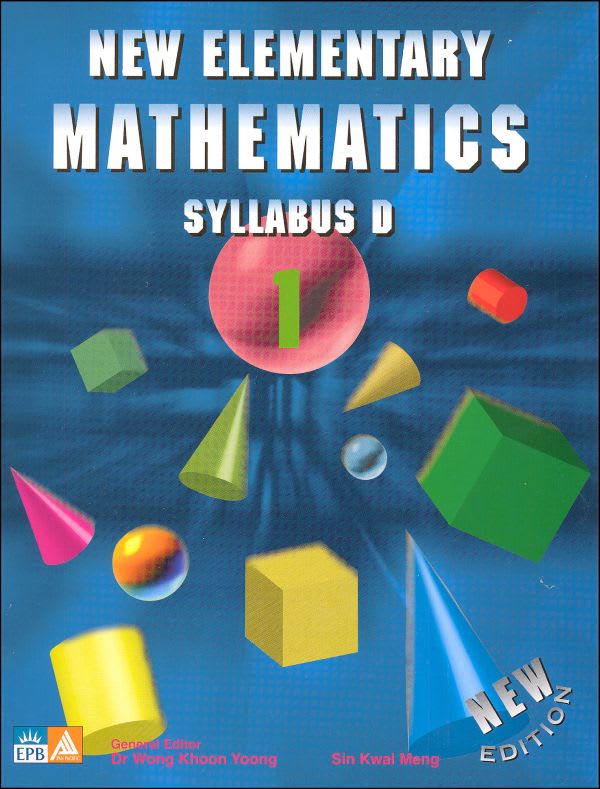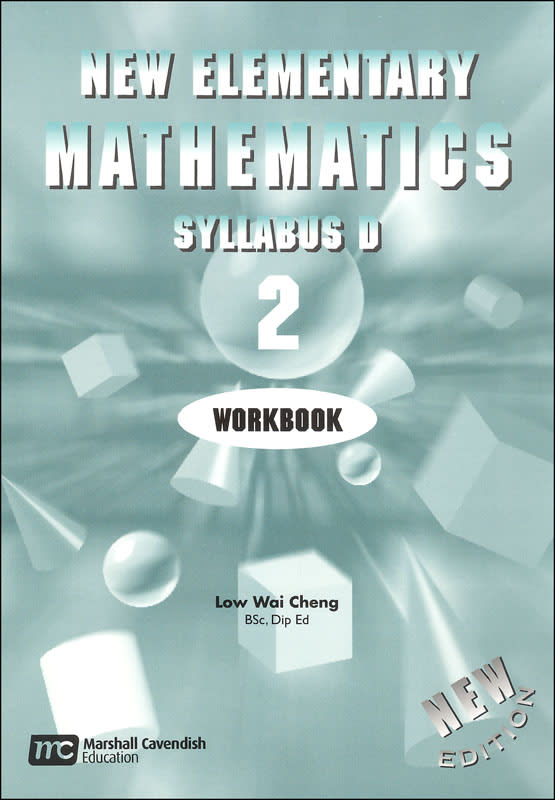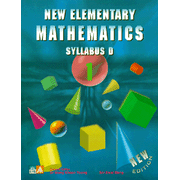Elementary Mathematics is actually a series of books written for grades 7-10 that have been used with academically oriented students in Singapore. Written in English, there are only minor problems with vocabulary to deal with (e.g., usage of the words "cheques" and "bills" on p. 103 of the first textbook). The larger issue to consider is the very advanced scope and sequence of these books.
The first level begins four chapters that mirror concepts typical for pre algebra courses (e.g., basic operations, work with factors, multiples, fractions, decimals, negative numbers). Chapters five and six move quickly through algebraic expressions into algebraic problem solving typical of Algebra 1 courses. The next chapter includes rate, ratio, and percentage problems at a similar level. Chapter seven covers practical financial transactions such as discounts, commissions, profit and loss, interest, and taxes. Chapters nine through fourteen introduce geometry, covering a good part of what is typically taught in tenth-grade geometry courses. It is difficult to compare the coverage of this book to others since the content stretches across that typically included in texts for grades 7 through 10. Students who have just completed the Singapore Math Primary Math level 6 should be well prepared for this level, but it is likely to be too difficult for students moving directly from any other sixth-grade program.
The second book continues with this very advanced scope and sequence. It moves on to more advanced algebra, including exponents, quadratic equations, solving simultaneous linear equations, inequalities, and polynomials. Geometry continues coverage of material typical of a tenth grade course, but also includes trigonometry and "motion geometry"—reflection, rotation, translation, enlargement, and combination of transformations. Two chapters on statistics are also included. Content coverage in this book reflects topics found in other series for grades 9 through 11. However, it is important to note that this is not complete coverage of everything for all three levels.
Level three goes deeper on algebraic and geometric concepts taught in the first two levels. It introduces functions and goes much further on trigonometry, transformations, and statistics.
The first four chapters of the fourth level teach loci, vectors, probability, and transformations. The second half of this level is review of the entire series from level one up through the first half of level four.
Free placement tests for this series are available on line at http://www.singaporemath.com.
The courses are designed to be taught by a teacher rather than given to students for independent work. A parent/teacher should work through each lesson and examples before students tackle the problems since some lessons might well be difficult for students to grasp without such help. Explanation within the text is not always adequate. Parents/teachers with poor math backgrounds might find these books difficult to teach because of this problem.
The teacher guides duplicate student editions, but they have teaching notes in the margins, some problem solutions worked out, and answers to some of the activities overprinted on the text. Answer keys for all the exercises, reviews, and quizzes are at the back of the student texts and workbooks, while only the teacher editions have answers to "Challenger" and "Problem Solving" activities. Even though teaching notes seem sparse, some help is better than none with this series.
Teacher guides are gradually being replaced by teacher manuals. Manuals are similar, but they do not duplicate the student texts (which makes them less expensive) and they include lesson plan guides.
Solutions manuals for these texts are in development with the first two levels already available. Optional workbooks provide additional practice and tests.
The appeal of this series lies in its use of multiple approaches for teaching concepts. Illustrations, word problems, and thought-provoking questions force students to think through concepts rather than simply memorize paradigms for problem solving. Plenty of practice helps students master concepts.
Students are expected to have a scientific calculator to be used with specified problems, even with the first level. Students will need to be alerted to the way commas are omitted in large numbers. Large numbers are shown with spaces instead of commas. For example 2,342,999 appears as 2 342 999. The metric system of measurement is used exclusively, and monetary references are to designations used in Singapore, which are surprisingly similar to ours. Most vocabulary differences will be easily understood. For example, "revision" means "review." (Although, I have yet to figure out what "inspection method" means.)
[Note: I reviewed only the first level of this series, but gathered information from their website regarding content of the other three levels. Presentation in all books is the same.]
















